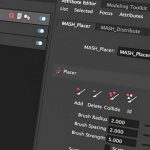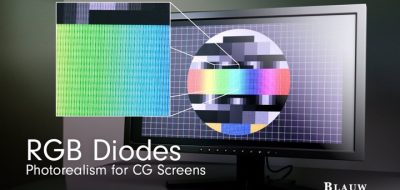New Corona Render Release for 3ds Max Gets Speed Boost, Dedicated Skin & Hair Shaders
The news of Render Legion and the Chaos Group joining forces shocked and excited us all. Now the fruits of that merger are already being witnessed. Corona 1.7 for 3ds Max has been released that gets a significant speed boost. This is due to Corona’s integration of V-Ray’s DMC sampler that gives it a 100% speed boost according to a posting. Corona offers an additional 600% speed boost from scenes that use more than one light. This is thanks to the optional new adaptive direct light sampling.
Other features include new and dedicated skin and hair shaders that round out the realistic character workflow with the renderer. Also noteworthy is that the new shaders are compatible with all major fur and hair rendering tools. That includes Hair Farm, Ephere Ornatrix, and 3ds Max native Hair and Fur. The renderer has always had high marks for highly realistic output of architectural interiors and hard-surface product shots like auto-renders. New hair and skin shaders mark a shift to the renderer being a true production tool.
Check the press release below for more details:
FOR IMMEDIATE RELEASE:
Corona Renderer 1.7 for Autodesk 3ds Max Released
Karlovo namesti 288/17 Prague – October 24th 2017 – The latest update to the Renderer brings many new features focused on VFX and characters to this CPU-based un(biased) photorealistic renderer.
Faster
Rendering is now up to 8 times faster (dependent on the scene) thanks to a new improved sampler, a new optional adaptive direct lighting algorithm, optimized glass / water sampling, and faster and better adaptivity calculations.
Character Shaders
New dedicated Hair and Skin shaders make it easier than ever to create realistic characters with great results from defaults, and Corona Renderer is now fully compatible with all major hair and fur rendering tools (Hair Farm, Ephere Ornatrix, and 3ds Max native Hair and Fur).
Materials
The Material Library is a collection of over 300 pre-made Corona materials, featuring a range of common materials that can be used ëas isí or as a starting point for users to create their own materials. Materials can be dragged and dropped into the viewport or the Slate or Compact material editors, are sorted by category, can be set as favorites, applied to all selected objects, or all objects using a material can be selected, all from within the Material Library interface. This is the first iteration of the Material Library, and features and functionality will be expanded in the future, e.g. allowing users to add their own materials to the Library and more.
The CoronaMaterial has been updated, and now includes a new Subsurface Scattering mode to make it easier to create solids with SSS such as marble, and Dispersion has been added allowing enhanced realism of glass, gemstones, jewelry, etc.
Other Additions and Improvements
Other improvements include: a universal Bump converter allowing any map to work correctly as a bump map; a UVW Randomizer map to vary textures across objects and instances; a dedicated Corona Camera; and reduced memory requirements.
The update also brings with it an extensive list of other improvements, features and bug fixes, and is compatible with 3ds Max versions 2012 to 2018.
Full information on the changes is available in the official blog post at:
https://corona-renderer.com/blog/corona-renderer-1-7-for-3ds-max-released/
Corona Renderer 1.7 for Autodesk 3ds Max is available for purchase on the developer’s website at http://corona-renderer.com, and there is also a 45-day unlimited demo version at https://corona-renderer.com/download/.
Render Legion a.s. are developers of Corona Renderer. Commercially available since 2014, Corona Renderer is fully integrated into 3ds Max, with an integrated Cinema 4D version in development.
Contact:
Thomas Grimes
grimes@corona-renderer.com






